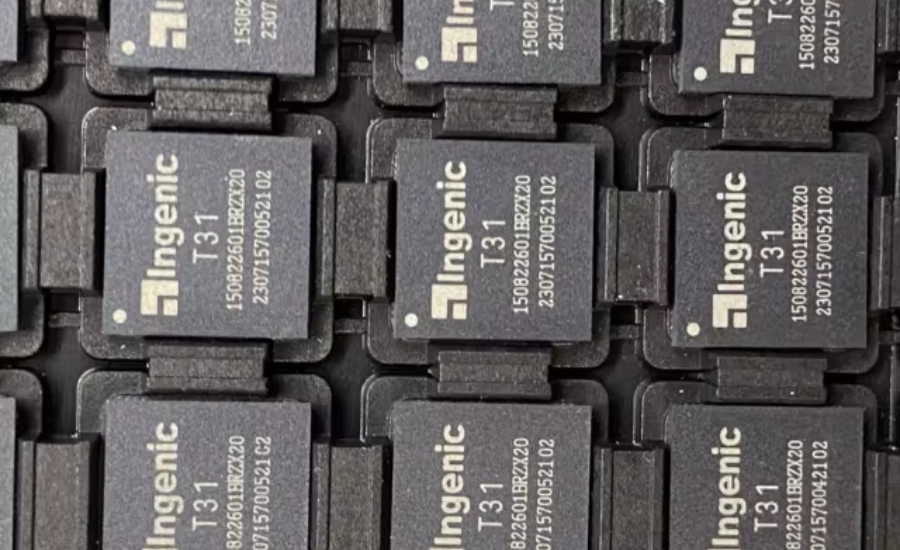In the rapidly evolving world of audio technology, advancements come quickly, and devices often become obsolete before they can be fully appreciated. However, certain technologies stand out as milestones, marking important shifts in how audio is captured, processed, and experienced. The Apogee F50100 represents one such pivotal innovation, shaping the landscape of digital audio interfaces and setting new standards in sound quality and user experience.
To appreciate the significance of the Apogee F50100, it’s essential to trace the evolution of audio technology itself. From the birth of recording to the digital revolution, each phase has contributed to the technologies we use today.
The Early Days of Audio Recording
The journey of audio technology began long before the digital age, with the invention of the phonograph by Thomas Edison in 1877. Edison’s breakthrough allowed for the first time the mechanical recording and playback of sound. In these early years, sound was captured on wax cylinders, which, while revolutionary, were crude by today’s standards. The sound quality was poor, and the medium was fragile and prone to degradation.
This early mechanical era was followed by electrical recording in the 1920s, which brought significant improvements in sound quality. The introduction of microphones, amplifiers, and electrical signal processing meant that audio could be recorded and reproduced with much greater fidelity. The radio and music industries grew alongside these developments, with recordings becoming more widely available to the public.
However, despite these advances, sound recording was still limited by the constraints of analog technology. The dynamic range, noise levels, and distortion inherent in analog recordings posed significant challenges for capturing and reproducing high-quality sound.
The Analog Era and Its Limitations
The advent of magnetic tape recording in the 1940s was a major leap forward for audio technology. Tape allowed for higher fidelity recordings and made it possible to edit audio by physically cutting and splicing the tape, an innovation that transformed radio production and music recording. The analog tape machines of the 1950s and 1960s became the standard for studios, offering significantly improved sound quality over previous methods.
However, even the best analog systems were far from perfect. Analog tape recordings were subject to hiss, wow, flutter, and other forms of distortion. While techniques such as Dolby noise reduction were developed to minimize these problems, they remained persistent issues.
Furthermore, analog audio’s susceptibility to degradation over time, as well as its limitations in terms of dynamic range, meant that it could never fully capture the complexity and nuance of live sound. Audio engineers and musicians began to seek new solutions that would allow for higher fidelity and greater flexibility in recording and mixing.
The Digital Revolution
The transition from analog to digital recording in the late 20th century was nothing short of revolutionary. The invention of the compact disc (CD) in the 1980s, followed by the introduction of digital audio interfaces, transformed how audio was captured, processed, and distributed. The digital revolution was marked by several key innovations:
- Improved Sound Quality: Digital recording allowed for greater dynamic range, lower noise levels, and the ability to precisely capture every detail of a performance.
- Non-Linear Editing: With digital audio workstations (DAWs), audio could now be edited and manipulated in a non-linear fashion, giving engineers unprecedented flexibility.
- Portability and Durability: Digital formats were much more durable than their analog counterparts, and files could be easily stored, copied, and shared without loss of quality.
However, the early years of digital audio were not without their challenges. One of the most significant problems was the issue of aliasing and quantization errors that could degrade sound quality. Additionally, early digital audio converters (DACs) often introduced unwanted artifacts into recordings, leading to a perception among some audio engineers and musicians that digital audio lacked the warmth and richness of analog recordings.
It was in this context that companies like Apogee Electronics began to make significant strides in improving the quality of digital audio interfaces and converters.
The Role of Apogee in Shaping Digital Audio
Founded in 1985, Apogee Electronics quickly established itself as a leader in digital audio technology. The company initially focused on addressing the shortcomings of early digital audio converters. Their pioneering work in anti-aliasing filters and advanced digital signal processing (DSP) allowed for cleaner, more transparent recordings with fewer artifacts.
Apogee’s products became widely adopted in professional recording studios around the world, where sound quality was paramount. The company’s reputation for innovation and quality continued to grow, and they played a key role in the transition from analog to digital audio recording.
One of Apogee’s most notable contributions to the industry was the introduction of high-quality analog-to-digital converters (ADCs) and digital-to-analog converters (DACs), which set a new standard for digital audio fidelity. These devices became essential tools for audio engineers and producers who demanded the highest quality in their recordings.
The Emergence of USB Audio Interfaces
As computers became more powerful and ubiquitous, the need for user-friendly digital audio interfaces grew. Musicians, podcasters, and content creators sought portable, high-quality solutions for recording and producing audio without the need for large, complex studio setups.
USB audio interfaces emerged as the perfect solution, allowing users to connect microphones, instruments, and other audio equipment directly to their computers. This shift democratized audio production, enabling anyone with a computer and a USB interface to create professional-quality recordings at home.
Apogee once again played a pivotal role in this evolution. Their USB interfaces, known for their exceptional sound quality and ease of use, became a go-to choice for musicians and content creators alike. The company continued to push the boundaries of digital audio technology, integrating their advanced DSP algorithms and converters into compact, user-friendly devices.
The Innovation of the Apogee F50100
By the time the Apogee F50100 was introduced, the company had already cemented its place as a leader in the world of digital audio. The F50100 represented the culmination of decades of innovation, combining cutting-edge digital signal processing with Apogee’s renowned conversion technology.
The Apogee F50100 was designed to meet the needs of professionals who demanded the highest possible sound quality in a compact, portable form. Its pristine converters ensured that recordings captured every nuance of a performance, while its advanced DSP allowed for real-time monitoring and processing with virtually zero latency.
What set the Apogee F50100 apart was its versatility. It was equally at home in a professional recording studio as it was in a home setup or on the road. Whether recording vocals, instruments, or podcasts, the F50100 delivered unparalleled sound quality and ease of use. This flexibility made it an ideal choice for both seasoned professionals and aspiring creators looking for a high-quality, reliable audio interface.
Conclusion
The Apogee F50100 is a testament to how far audio technology has come. From the days of Edison’s phonograph to the digital revolution, each phase of innovation has paved the way for devices like the F50100, which bring professional-grade sound quality into the hands of creators worldwide. Apogee’s ongoing commitment to pushing the boundaries of digital audio ensures that the future of sound technology will continue to evolve, offering even more opportunities for innovation and creativity.









